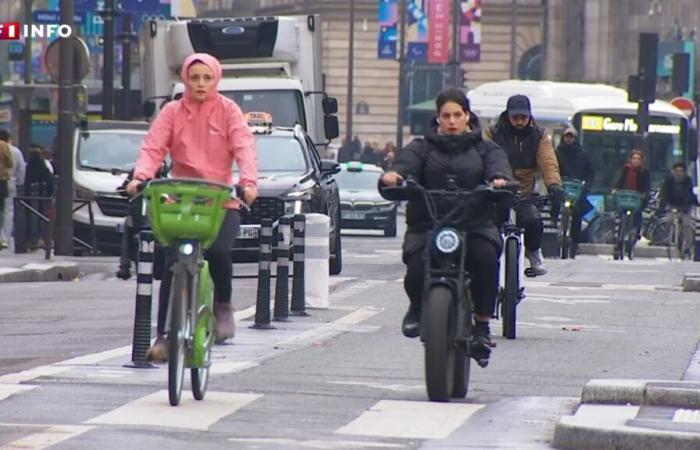“Fat bikes” and their oversized wheels are taking up more and more space on cycle paths.
But the coexistence between these often unbridled machines and other users is sometimes conflicting.
Watch this report from 8 p.m. on TF1.
Follow the full coverage
The 8 p.m.
An “SUVization” of bicycles? Increasingly fashionable, “fat bikes”, these machines on the border between the electrically assisted bicycle and the moped, have been invading the cycle paths of metropolises for several months. But cohabitation with other users is sometimes conflicting. “It's like a scooter, it should be on the road and not on cycle paths“, estimates a local resident interviewed in the TF1 8 p.m. report at the top of this article. “The faster they go, the more dangerous it is“, points out another passerby, while a third deplores “dangers on an XXL scale“.
Imported from across the Atlantic, “fat bikes” (literally “heavy bikes” in French) are designed, basically, to make their way over sand or snow. But today they are reaching the cities. Weighing around 25 kilos, users highlight their robustness and comfort. “I wanted a sturdy bike that I could carry someone with and have my son in front“, explains a user at the microphone of TF1. Others praise its assistance mode which allows you to move around… without even having to make the effort to pedal. “He moves forward on his own“, assures another follower, who says he uses it to get to work.
“We are often called to unblock them”
Price level, count between 1500 and 5000 euros, depending on the model. By default, the speed of a “fat bike” is limited to 25 km/h, but many owners are not satisfied with this. “We are often called to unblock the bikes a little.“, confirms David Ardisson, manager of the “Ebike Premium” store in Montpellier (Hérault). “Bikes are limited to 25, this is the regulation. We will not go beyond“, replies the two-wheel seller, who does not intend to deviate from the law. On the internet, however, a few clicks are enough to find tutorials allowing you to remove the pedaling assistance limit yourself. Sales sites Chinese also offer models that are unlocked by default, even though this is prohibited.
For certain models, a simple manipulation of the speedometer allows the machine to be unleashed, enabling it to reach a speed of 50 km per hour. The owners of these XXL mountain bikes do not deprive themselves of it. “25 km/hour, for the bike it is, is too little, I think“, estimates a user interviewed in the street. “I sold my scooter so I could buy a bike. There is an app […]. It can be unclamped to go up to 30“, confides another. Theoretically, in accordance with the law in force, the power of the engine “must not exceed 250 watts. Otherwise, they fall into the category of mopeds“, remind our colleagues from the newspaper The World (new window). This requires having an approved helmet, a license plate, and also riding outside cycle paths.
-
Read also
VIDEO – Bicycles on the 4 lanes: the Breton experiment which angers motorists
Faced with the proliferation of “fat bikes”, the subject was debated in October during the Paris Council. Opposition elected officials are calling for stronger controls. “The idea is absolutely not to ban 'fat bikes'. I ask the city of Paris that the municipal police ensure compliance with all the rules, the highway code and also compliance with these 25 km/hour“, emphasizes to TF1 Maud Gatel, who chairs the Modem group at the Council of Paris. Having an unrestrained bike will result in a fine of 1,500 euros, and up to 30,000 euros for the professional who carries out the operation.






